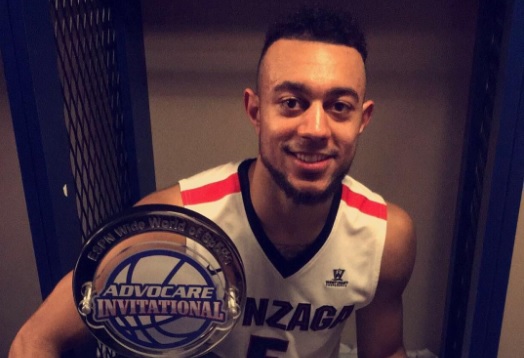5 players making a mistake by leaving school early for NBA Draft

It’s difficult to begrudge any young player who chooses to forego additional time playing as an amateur when they could cash in on their talents by heading to the pros. Judging the financial standing of any young man or the motivation behind his decision to turn pro can get dicey.
Making the choice to begin playing professionally is a huge proposition, and the timing of that decision can have serious repercussions for the player’s chances to succeed as a pro and potentially affects their future career earnings.
Any player has the right to choose to use their skills to earn money, but some choose to cash out too soon and hurt themselves in the long run.
The new draft system allows players to test the waters and play out the draft process, receiving feedback if they don’t hire an agent. Some players forego that safety and hire an agent right away, jeopardizing their career before it even starts.
Here’s a look at five players who are making a mistake by leaving school early.
1. Nigel Williams-Goss, Gonzaga
Players can often misinterpret a run through March Madness as a rise in their draft stock. Williams-Goss may be doing just that.
He was excellent for the Zags this season, earning first-team All-American honors. The point guard showed himself to be a lockdown defender, floor general, and capable shooter after transferring from Washington.
Projecting those skills to the next level, however, can be tough. Williams-Goss’ defense could diminish, since he doesn’t have true NBA size or speed. He shot 36 percent from the college three-point line, but rarely showed NBA range.
Williams-Goss will likely hear his name called during the second round of June draft. Had he returned to Spokane, bulked up his body and refined his shot, we may have seen him as a first-round pick in 2018.
2. Dillon Brooks, Oregon
Brooks was Oregon’s most effective player most of this season, making big shot after big shot. His prospects at the next level are a bit murkier.
Despite standing just 6-foot-7, Brooks spent much of this season playing as an undersized power forward. His offensive game is predicated on physically imposing his will on smaller guards or skinny forwards. That won’t be an effective way to attack in the NBA.
Defensively, he may be a tweener in the NBA, neither fitting as a small forward nor a power forward. Draymond Green’s success, despite appropriate size, has made some forget the “tweener” label, but almost no one has Green’s footspeed or instincts on defense.
Brooks will likely be a late pick, if he’s chosen at all, and would have benefited from another year in Eugene.
3. Tyler Dorsey, Oregon
The same could be said of Brooks’ teammate Tyler Dorsey. The hot shooter earned himself the moniker “Mr. March” while finishing as one of the NCAA Tournament’s leading scorers.
The 6-foot-4 guard will struggle to defend shooting guards at just 195 pounds and has virtually no experience as a full-time point guard. Finding a spot for him on an NBA roster won’t be easy and he’ll likely need to earn his keep in Summer League and training camp.
Dorsey has previously played for the Greek national team’s program (on their U-19 team), so if his NBA dreams don’t come true in 2017, he’ll likely refine his game in the Mediterranean.
4. L.J. Peak, Georgetown
Size and fit are both crucial factors in projecting players to the next level. Peak would seem to pass both of those tests, standing 6-foot-5 and 215 pounds, a perfect size for an NBA shooting guard.
He has the physical tools to hang in the league, but may not have the skills to be a complete package. His shooting in three seasons as a Hoya has been erratic at best. His freshman year he shot under 25 percent from outside the arc, improved to 41 percent as a sophomore, and then plummeted back to 33 percent in his third year.
In today’s NBA, any reliable role player worth drafting needs to either have a jump shot that can be counted on or have another elite skill to make up for a lack of shooting. Peak doesn’t have either and likely won’t be drafted.
5. Antonio Blakeney, LSU
The NBA community saw a lot of Blakeney in his freshman season, as he played alongside eventual top pick Ben Simmons in Baton Rouge. The injured Sixers point guard/forward accentuated the skills of those around him, proving himself to be a strong scorer, passer, and rebounder.
Simmons’ abilities as a distributor provided Blakeney open looks, but the 6-foot-4 guard converted only 42 percent from the field and 33 percent from beyond the arc.
With Simmons off to the NBA, Blakeney had the ball in his hands more often in 2016-17. He saw increases in shots, points, rebounds, field goal percentage, and three-point shooting, but was still out of control and inefficient most of this season.
His small size will be an issue, especially given his lack of ball control. He averaged more turnovers than assists in the middling SEC, a bad sign for his chances as a pro.
His best chance is to develop his outside shot into a real weapon as a D-League player, though he may have been better off doing so at LSU next season.
Shane McNichol covers college basketball and the NBA for Larry Brown Sports. He also blogs about basketball at Palestra Back and has contributed to Rush The Court, ESPN.com, and USA Today Sports Weekly. Follow him on Twitter @OnTheShaneTrain.
